
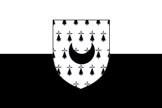
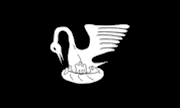
Flag of
Cornwall, UK (fotw);
Flag of Verquigneul, France (fotw);
Flag of Tal-Pietà, Malta (Wikipedia
& fotw)
2) See ‘jolly roger 1)’.
3) See ‘mourning flag’.


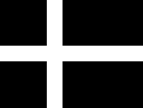
Flag of the Anarchists (fotw); Flag of
Edward Lowe c1719 (fotw);
Mourning Flag, Denmark (fotw)
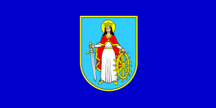

Flag and Arms of
Lokve, Croatia (fotw)

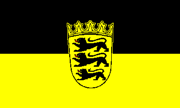
Lesser Arms and Civil Flag of
Baden-Württemberg, Germany (fotw)



Arms of Omišalj,
Gornja Vrba and
Barilović, Croatia (fotw)
Notes
This term and its use should apply only to heraldic symbolism, and be employed in vexillology solely in that context, so the shields illustrated above may be blazoned as follows:
a) Gules, a tower embattled Argent issuant from a base Azure and in chief a mullet Or;
b) Parti per pale Gules and Argent overall a willow tree eradicated of the second and first counterchanged;
c) Gules a bend Argent between two swords in bend of the same
hilted and pommelled Or.



Arms of Mikleuš,
Donja Dubrava and
Krapina-Zagorje, Croatia (fotw)
Notes
The shields illustrated above may be blazoned as follows:
a) Gules a bend between three balls and an oak twig all Or;
b) Gules an oak tree eradicated Or in base a cannon Sable;
c) Party per pale and per bend embattled Gules and Or in chief three mullets of the second and first counterchanged.
2) In English then British RN usage, now obsolete (and largely – but not exclusively – dependent upon the seniority of the admiral in command), the junior of three alternative (undefaced) ensigns carried by a warship until 1864 – see ‘red ensign 2)’, ‘white ensign 2)’, ‘yellow admiral’ and note b) below.
3) Generically, any canton flag (either plain or defaced) with a blue field – particularly (but not exclusively) if flown at sea – a British-style ensign (see also ‘canton flag 1)’, ‘deface’ and ‘red ensign 3)’).
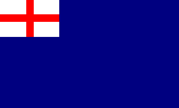
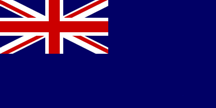
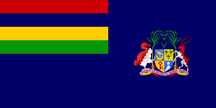
Blue ensign c1630 – 1707, England (fotw);
Reserve Ensign, UK (fotw);
Government Ensign, Mauritius (fotw)
Notes
a) With regard to 1), the blue ensign is also used either plain or
defaced as the ensign of many British yacht clubs, as a template (or archivexillum) for the flags of Government departments and – with few exceptions –
of British Overseas Territories (see also ‘armorial ensign
2)’,
‘colonial flags’,
‘defaced’, ‘template flag’ and
‘warrant’).
b) Regarding 2), before 1864 an Admiral’s seniority was outwardly displayed by the
colour of his command flag and by the ensigns flown by any ships under his command - the junior colour
being blue, the next white and the senior red - however, in 1864 this colour system was abolished, and
thereafter all flag officers flew a white command flag from the appropriate masthead where applicable,
and all Royal Naval ships the white ensign (see also ‘distinction of colour�
and �flag of command 1)’).
c) Furthermore, the ensigns worn within a fleet could be arbitrarily changed (if the tactical
situation required it) by order of the Flag Officer in overall command of that fleet irrespective
of the grade held by any of his subordinate admirals.
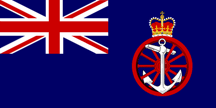
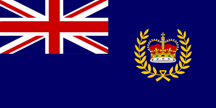
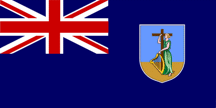
Ensign of the Department for Transport, UK (fotw); Ensign of the
Royal Corinthian Yacht Club, UK (fotw);
Flag of Montserrat (fotw)
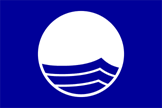
Beach Quality/Blue Flag, European (fotw)
![[Blue Jack]](../images/v/vxt-d2571.gif)
![[Blue Jack]](../images/v/vxt-d2572.gif)
![[Blue Jack]](../images/v/vxt-d3778.gif)
Jack of the Royal Maritime Auxiliary, UK
(Martin Grieve); Jack of the
Northern Lighthouse Board, UK (fotw),
Jack of the Board of Trade c1939. UK (fotw)
![[Blue Peter - ICS Papa]](../images/v/vxt-d044.gif)
Signal Flag P (Papa) (fotw)

Blue Star Banner/Service Flag, US (fotw)
Please note with regards to 1) that the ship's boats of naval vessels would not normally wear ensigns when operating in an anchorage if no foreign ships are present.
![[US Admiral, early 20th century]](../images/v/vxt-d590.gif)
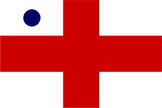
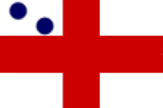
Late 19th – Early 20th Century, US (fotw); Boat Flags of a
Vice-Admiral and Rear Admiral
of the White c1702-1864 (fotw)
Notes
a) With regard to 3) these flags came to be flown aboard major vessels from c1872 onwards because the abandonment of an auxiliary sailing rig (due to the increased efficiency of marine engines and the weight of armour plate) meant that there was only one mast available from which to display a flag of command, and the previous system of varying mastheads to denote seniority, therefore, no longer viable.
b) The current versions of UK command flags date from regulations of 1898. These regulations reduced the width of the red cross, increased the size of the balls and changed their position on the flag of a rear-admiral (as illustrated below).
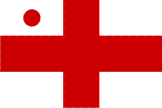
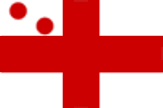
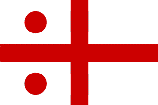
Boat Flags then command Flags of a Vice Admiral
and a Rear-Admiral 1864 – 1898, UK (fotw): Flag of a
Rear-Admiral according to current regulations (fotw)
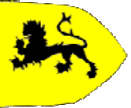
Flag Ascribed to Ibernia, 14th Century (fotw)
![[flags with borders]](../images/v/vxt-d046.gif)
![[flags with borders]](../images/v/vxt-d1565.gif)
![[flags with borders]](../images/v/vxt-d046a.gif)
National Flag of Maldives (fotw); Flag of King João II, Portugal 1485 - 1495 (fotw);
National Flag of Grenada (fotw)
Please note - not to be confused with a fimbriation which is invariably plain and whose sole purpose is to divide one colour from another (see also ‘charge’, ‘fimbriation’, ‘panel’ and ‘rule of tincture’).
![[bordered]](../images/v/vxt-d2929.gif)
Prime Minister’s Flag, Portugal (fotw)
![[border of three]](../images/v/vxt-d3194.gif)
![[border of three]](../images/v/vxt-d5287.gif)
Flag of Prince Edward Island, Canada (fotw);
Flag of Ameliasburgh, Canada (fotw)
![[Hungary president]](../images/v/vxt-d1664.gif)
![[Hungary president]](../images/v/vxt-d3195.gif)
Presidential Standard of Hungary (fotw);
War Ensign of Hungary (fotw)
![[bordure]](../images/v/vxt-d4692.gif)
![[bordure]](../images/v/vxt-d1302b.gif)
![[bordure]](../images/v/vxt-d5162.gif)
Flag of La Palma, Spain (fotw);
Flag of Oprisavci, Croatia (fotw);
Former Flag of Catió, Guinea Bissau (fotw)
![[borough arms]](../images/v/vxt-d4574.gif)
![[borough arms]](../images/v/vxt-d4575.gif)
Arms of Westminster 1601 and 1964, UK (fotw)
![[borough flag]](../images/v/vxt-d4112.gif)
![[borough flag]](../images/v/vxt-d4111.gif)
Flag of Horn-Bad Meinberg, Germany (fotw); Flag of
Southend-on-Sea, UK (fotw)
![[flags with borders]](../images/v/vxt-d1056.gif)
![[flags with borders]](../images/v/vxt-d1056a.gif)
Flag and Arms of Kyjov, Czechia (fotw)
![[bow flag]](../images/v/vxt-d1089.gif)
Naval Jack of Argentina (fotw)

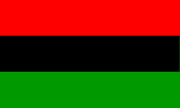


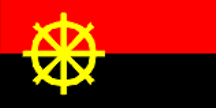
![[bow pennant]](../images/v/vxt-d1355.gif)